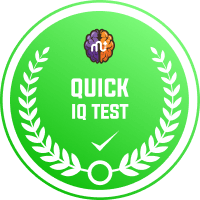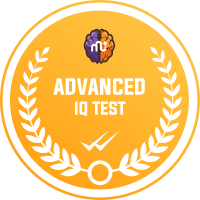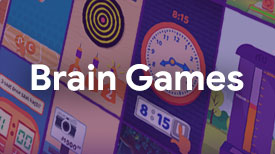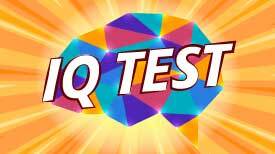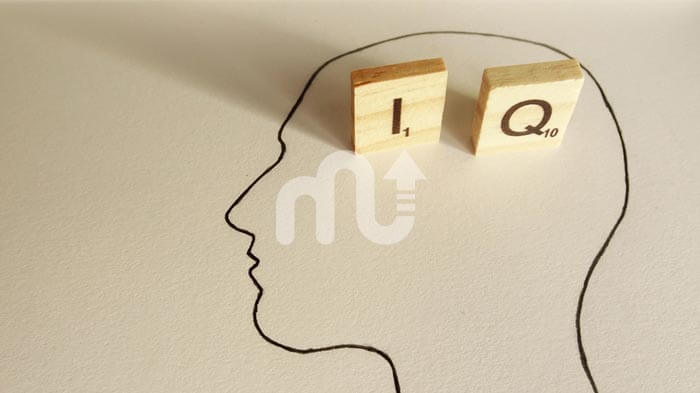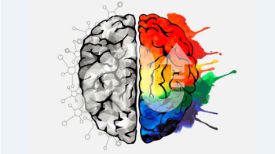
We know that researching and understanding IQ tests can take hours if you're not familiar with IQ tests. Unlike the others, we have put together everything you need on this site to help you find your way more quickly.
So whether you're looking for and learning about the Stanford-Binet test, sample questions, or exercises, we've got what you need.
💡Tip: If you are just interested in learning your children's IQ scores, you can take the MentalUP Online IQ Test for Kids just from below. It doesn't require a supervisor like traditional IQ tests or Stanford-Binet and is suitable for children of all ages.
Academics developed the MentalUP IQ Test for Kids to give parents quick results about their children's potential. With accurate results, parents can help their children use their intelligence according to their IQ scores.
Stanford Binet Sample Questions
Exercises to Get Ready for the Stanford Binet IQ Test
If your children get anxious to take the Stanford Binet, don’t worry. Because we brought together the Stanford Binet examples for them to get ready!
💡 IQ tests aren't the only way to learn about your child's cognitive abilities and strengths. Using MentalUP, prepared by pedagogues and expert educators;
√ You can learn your child's abilities and discover their strengths and developmental aspects.
√ You can compare cognitive performance with peers.
√ You can support the development of improvable skills through fun and educational games.
What Is the Stanford Binet Test
The Stanford Binet IQ Test is an intelligence test used to identify gifted children or children with mental deficiency. The Stanford-Binet is the first official intelligence assessment. It was prepared by Alfred Binet and Theodore Simon.
In the first Stanford Binet intelligence test which was completed in 1905, there were 30 questions, which were in different difficulty levels. Children had to take the Stanford Binet IQ test questions under the supervision of a specialist. The test supervisor asked the questions, increasing the degree of difficulty until they failed to answer one.
In just three years, the Stanford Binet assessment was able to collect enough data to detect the average IQ levels of children of all age groups. According to the results of the assessment, the concept of the mental age had been defined.

Why Should You Take Our Stanford Binet IQ Test?
🧠 If you want a test-like experience, we strongly recommend trying the MentalUP IQ Test for Kids. It has more familiar experience with Stanford-Binet Test and can be a great solution for parents looking for Stanford-Binet Test Example.
Content Areas of the Current Stanford-Binet Intelligence Test
The fifth edition of the Stanford Binet Intelligence Scales includes five factors: fluid reasoning, knowledge, quantitative reasoning, visuospatial processing, and working memory.
Each of the factors is formed of distinct subtests that are divided into one of two domains. These two domains are designed to create a balance between tasks that involve language skills and ones that are less verbally dependent.
A single composite or full-scale IQ score, a verbal IQ, and a nonverbal IQ are provided in the current edition.
How to Take the Stanford Binet IQ Test?

In order to take an official version of the Stanford-Binet test, it is advised to contact a psychologist, as most of them are qualified to administer the test.
Other professionals may be able to provide the test for academic placement or for some neuropsychological treatment centers, so you can contact employees of these institutions too.
There are some rules that the test supervisor should be careful about. Any distraction for children should be avoided during the test. The test should be performed individually. There should not be any noise and any distracting materials in the test room. The test can take from 45 minutes to 3 hours depending on the children's age.
Is Stanford-Binet Still Reliable?
Stanford Binet IQ Test questions have been updated 4 times until now. The fifth edition of the Stanford-Binet test has been put through reliability tests meticulously and reported to be reliable compared to other IQ assessments.
The Stanford Binet Intelligence Scales has 15 different subtypes. These tests are used to measure mainly 4 skills. These are;
- Verbal/Language Reasoning
- Visual-Abstract Reasoning
- Quantitative Reasoning
- Short-Term Memory Loss
However, it's important to keep in mind that many factors can impact test scores and there may be a necessity for other measurements to decide an individual's intelligence in some cases. Some of the factors that lead to revisions in the test and may influence the test scores include:
- The concept of the language changes over time. Because of the changes in language that affect the results of the intelligence test, experts had made some changes on the intelligence tests respectively.
- The cultural structure of each country is different, so correct answers may not be obtained from the same test.
- Gender difference. Even this is enough reason for different outcomes.
Stanford Binet Intelligence Scale
Scores for the Stanford Binet are scaled according to the person's age and the subtests from five factors. The test classifies one's intelligence according to the score ranges and the average test score is 100.
You can see the Stanford Binet Intelligence Scale in the table below:
| IQ Range ("Deviation IQ") | IQ Classification |
|---|---|
| 40-54 | Moderately impaired or delayed |
| 55-69 | Mildly impaired or delayed |
| 70-79 | Borderline impaired or delayed |
| 80-89 | Low average |
| 90-109 | Average |
| 110-119 | High average |
| 120-129 | Superior |
| 130-144 | Gifted or very advanced |
| 145-160 | Very gifted or highly advanced IQ |
What Is a Good Score on the Stanford-Binet Test?
To determine Stanford-Binet IQ test scores, school districts use Percentile Rank (PR) numbers to compare each student’s individual test performance against a nationwide sampling of students born within the same three-month age range.
A percentile rank of 80 means that the child's score was higher than 80% of students tested nationwide, and the PR ranges from 1-99.
The SB5 Total and Subtest Scores on Children’s Report
| Nonverbal IQ (NVIQ) | Combined score taken from the five nonverbal subtests. |
|---|---|
| Verbal IQ (VIQ) | Combined score taken from the five verbal subtests. |
| Full Scale IQ | Combined score taken from all 10 subtests. |
| Fluid Reasoning | One’s ability to use inductive or deductive reasoning while solving both verbal and nonverbal problems. |
| Knowledge | Assessment of understanding of general information, vocabulary, social behavioral standards, and common sense that kids within the same age expected to know. |
| Quantitative Reasoning | Assessment of individual abilities with basic math concepts, patterning, sequencing, ordering, classifying, comparing, and numerical problem-solving skills. |
| Visual-Spatial Processing | Assessment of individual abilities to identify patterns, relationships, spatial orientations, and how individual pieces relate to whole images on display as well as solve problems using pictures, images, diagrams, geometric shapes, maps or tables. |
| Working Memory | Assessment of individual abilities to access information seen or heard and how that data is inspected, transformed or sorted when answering a question or solving problems. |
What Is the Suitable Age to Take the Stanford Binet Test?

There are many different opinions with regards to the Stanford Binet age range, such as Leiter Test and Mensa IQ Test and Wechsler IQ Test. However, it is widely accepted that the test is intended to measure intelligence from the age of 2 to adulthood. Of course, you can always check this with experts.
How to Support Intelligence Development of The Child?
In this article, we brought together everything you need to know about the Stanford-Binet IQ test. But keep in mind that there are many ways to boost the cognitive development of children.
This is why MentalUP Brain Exercise Games aim to support the development of children in verbal reasoning, visual-spatial perception, quantitative reasoning, short-long term memory, attention, and other cognitive skills. The games include attention, memory, visual-verbal intelligence, logical reasoning, and conceptualization games.
By spending 20 minutes daily, children can improve their mental skills with MentalUP.



